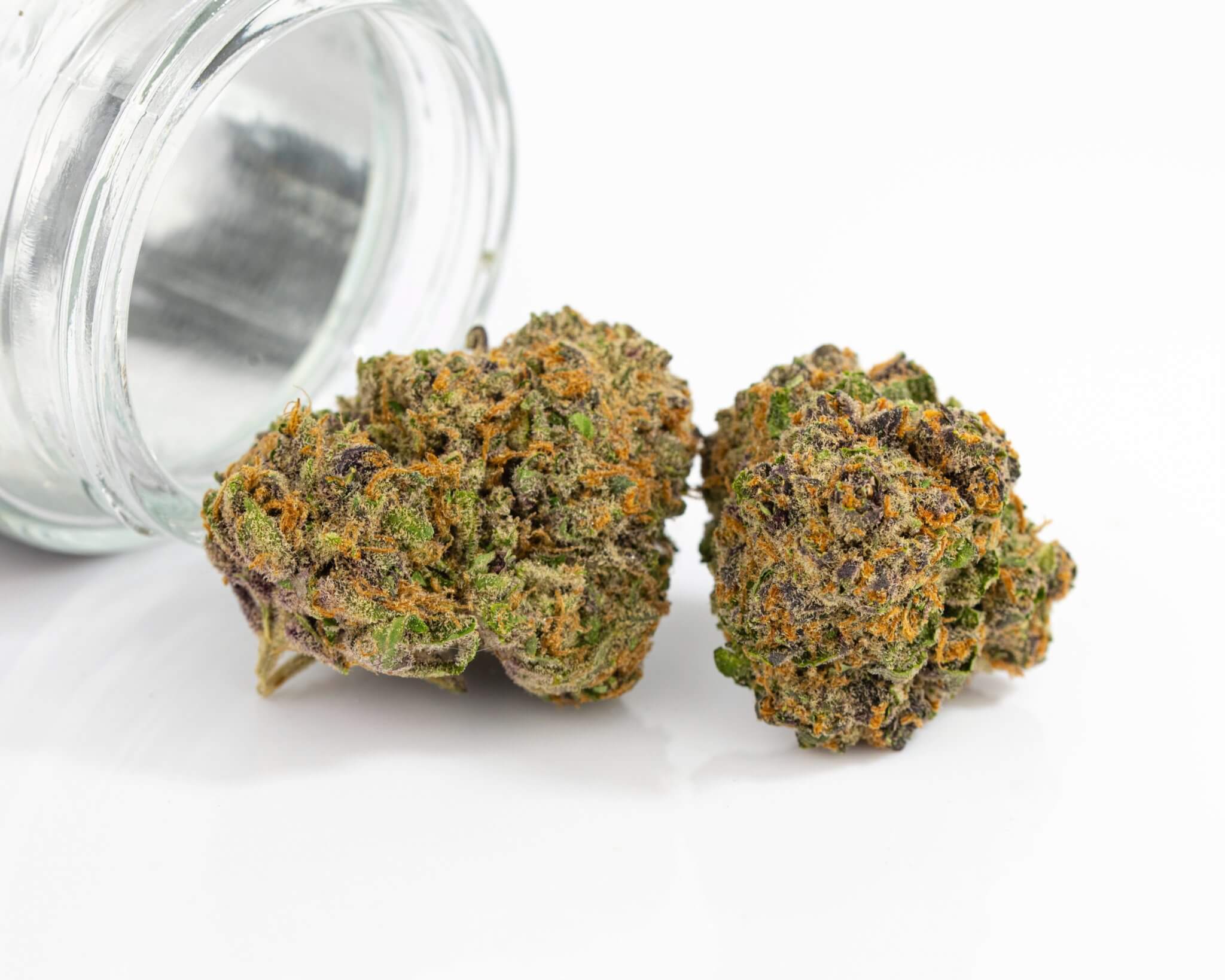
Evaluating a Nug
All nugs are made up of the same parts: The cola, bracts, trichomes, sugar leaves, fan leaves, and pistils. But how do you know if your nug is a good one? So glad you asked. Marina Mikkelsen, our VP of National Cultivation, gave us a crash course on what to look for and what to stay far away from when finding the perfect nug.
Diagram of a Cannabis Plant
First things first, before you can identify a good nug from a mediocre one, you need to know what you’re looking at. Here’s a look into the anatomy of a nug.

Bracts – Small leaves with a dense covering of resin glands containing the highest THC concentration on the plant.
Calyx – Sometimes confused with bracts, a calyx makes up the base of the flower. It holds everything together, including some of the most important plant parts: The pistils and the trichomes.
Cola – Located at the very top of the plant, the cola gets the most light exposure and has the most plant hormones, making it the largest and most potent flower on the plant.
Fan Leaves – Picture your stereotypical cannabis leaf: That’s a fan leaf. While not technically a part of a nug, fan leaves are critical to flower growth. They primarily support photosynthesis by taking in as much sunlight as possible.
Pistils – The reproductive organ of female cannabis plants, often red or orange.
Sugar Leaves – Small leaves that grow around the cannabis buds and are coated in trichomes.
Trichomes – Resin-filled appendages on the flower’s surface that have a crystal-like appearance and contain most of the plant’s cannabinoids, terpenes, and flavonoids.
Smell
Just like the effects of cannabis strains are unique, so, too, are the smells. The exact smell will vary depending on the strain, but you should be able to open a jar and smell the terpenes coalescing to a scent unique to the strain. If your cannabis bud smells earthy, skunky, sweet, or like gasoline, you’re good to go. But there are some aromas you should avoid. If the bud smells like fresh-cut grass or hay, it’s a sign it was not cured properly. Musty, mildew-like smells indicate mold contamination.
As Marina says, with good bud, “when you break the nug open, it should hit you in the face.” A weaker smell can mean the bud is old, dried out, or less potent.
Appearance
Does size matter? Sure, but it’s not the most important thing. Marina says that the density of the flower is a better indicator of quality; the more compact, the better. You don’t want a larfy nug that’s fluffy and full of stems (larfy = wispy, without much weight to it ).
The amount of trichome coverage can also give you insight into the quality of the cannabis flower. Quick refresh: Trichomes are the resin glands that cover the flower and give it that sugary, crystal-like appearance. Trichome coverage also tells you how well the bud was handled during cultivation. Mishandling a cannabis flower will damage the trichomes, resulting in a lower-quality product.
Feel
Sticky fingers are no fun, but sticky cannabis is a different story. A good nug should feel sticky to the touch, like syrup, but not stick to your fingers. Don’t mistake stickiness for moisture, though. Moist cannabis simply hasn’t been properly dried and cured. Though you don’t have to worry about proper texture with any Verano products, be wary when purchasing cannabis outside of the dispensary. Your local bud shop will always take the necessary time to dry, cure, and package nugs so you don’t run into this issue.
On the opposite end of the spectrum, you have dry cannabis. Dry cannabis isn’t necessarily always lower in quality but typically lower in potency. Overly dry cannabis can also be harsher to smoke. If a nug is too dry, it will easily crumble. If it’s too wet, it will turn into a ball of mush when you try to grind it. You want to find the sweet spot between the two. According to Marina, “The ideal nug should be easy to break into without crumbling into dust.”
–
There you have it: Nugs truly are as multifaceted as they are beautiful. So go get your bud on and find the right nug for you at your local dispensary.